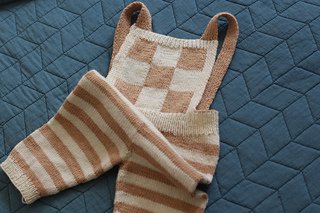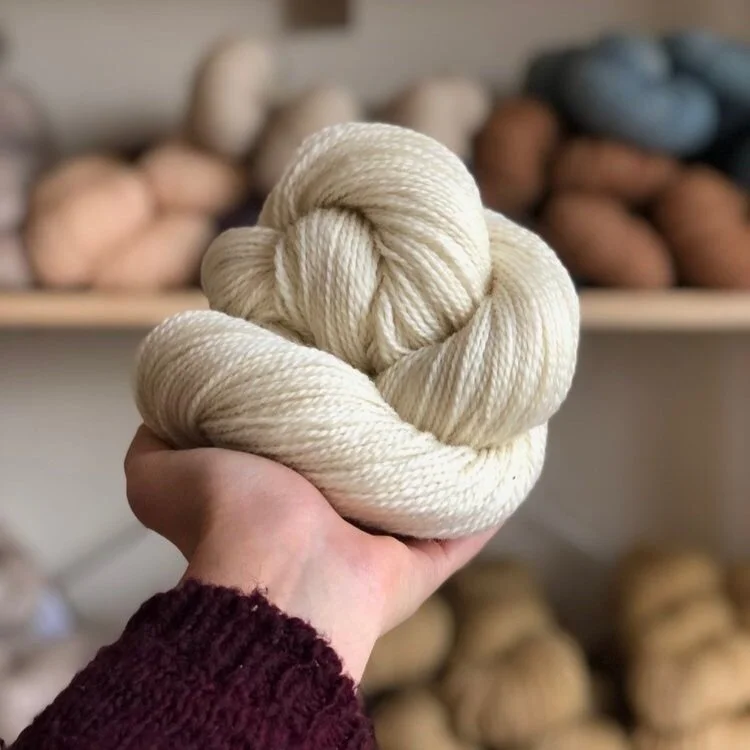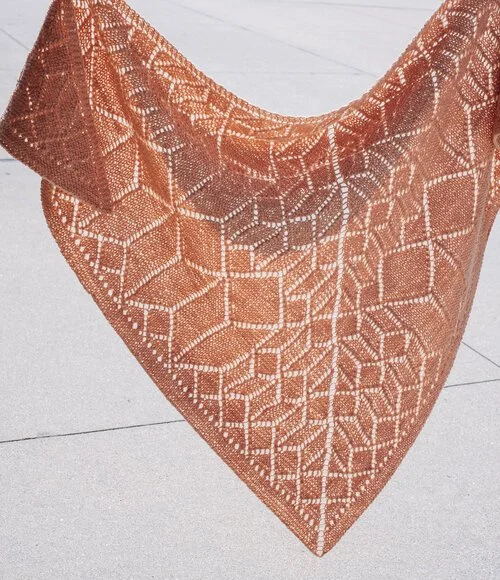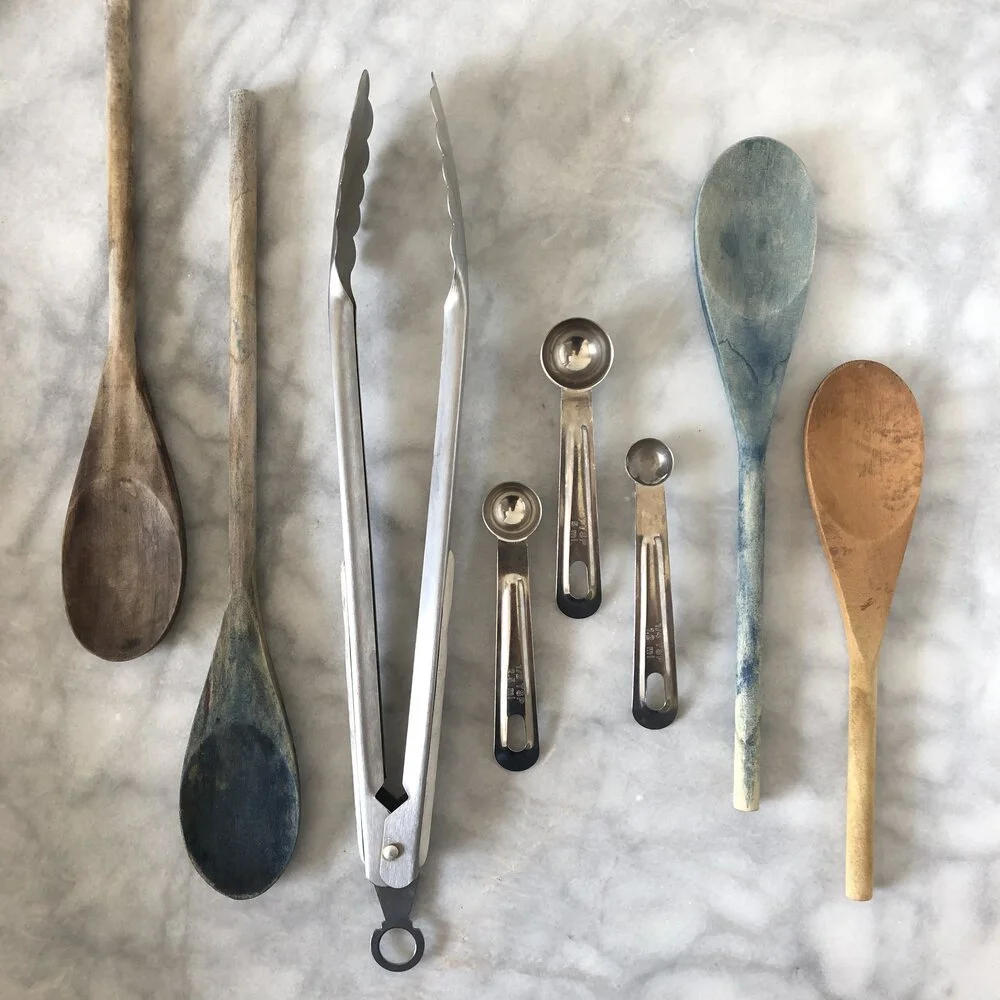SUSTAINABLE. TRACEABLE. RESPONSIBLE.
We’re on a mission to connect you with ethically produced, naturally dyed yarn at a fair price—from the farm to fiber enthusiast. Our yarn is 100% traceable start to finish, and is produced regionally in partnership with several companies throughout New England.
Meet Our Yarns
Grown, spun, and botanically dyed here in the US!
Our goal has always been to make beautiful, ethically sourced, minimally processed, and naturally dyed yarns, and we are still very much guided by these principles. Our search for local yarns has been long, and there have been many ups and downs along the way, but we are so happy and so proud of where we are today!
All our yarns are sourced locally and spun at Battenkill Fibers. We work closely with small farms in the Hudson Valley to bring you some of the best of what the US has to offer!
All the dyeing magic happens at Green Matters Natural Dye Company, using only natural extracts and dye materials.
Needless to say that all our yarns are non-superwash, mulesing free and micro-plastic free.
-

BFL / Merino Fingering
If you're in search of a truly luxurious yarn, look no further! Silky soft from both the BFL and Merino, lustrous, and strong, this is an exceptionally adaptable blend. We want to make everything in this yarn, from sweaters to shawls and all the baby knits!
-

Corriedale Sport
A resilient fiber with a lot of loft and elasticity. Soft enough next to skin, yet durable, this yarn would make beautiful, hard-wearing garments, socks and other accessories!
-

Alpaca/Corriedale DK
Velvety smooth and supple, with just enough structure and elasticity to keep the fabric from draping too much, this is a truly sumptuous yarn.
-

Romney/Merino DK
The perfect marriage between two classic breeds: the Romney brings just the right amount of rustic, while the Merino balances it out with a delicate touch, making this a beautiful and extremely versatile yarn to work with.
Natural Color
Our dreams are made of wool...
If you spend all your (non-existent) free time knitting. If you’d call yourself an obsessive knitter or crocheter. If your craft brings you joy, purpose and is your happy place, you’re just like us.
We love working with wool. It is like no other fiber! Soft and rough all at the same time. Malleable, but also sturdy and durable. Oh, so cozy! For fiber crafters, it is both the artist’s palette and canvas; absolutely essential to our creativity and to our making process. Just as we strive to find the best yarns for our own projects, similarly we strive to make the best quality yarn we can for our fellow fiber artists.
-
What is the difference between superwash and non-superwash wools?
We’re all becoming more aware and conscious of all of the ways in which our consumption impacts the environment. This includes our fiber consumption. If you’d like to learn more, Ashley of the Woolful Podcast wrote a great article about this!
The appeal of superwash wool is that it doesn’t need to be hand washed. However, this ease of use comes with a big downside: microplastics entering our water systems. That’s why at Oysters and Purls, we believe our crafting should and can be superwash-free.
-
Similarly, the advantages of using only natural extracts and plants are as follows:
Less dangerous runoff and chemicals. While natural dye methods still incorporate the use of heavy metals (alum and iron), we work with a dye house dedicated to carefully managing and properly disposing of dye baths and solutions. Get to know Green Matters Natural Dye Company here.
Regenerative dye goods. Our dye house uses extracts rather than botanical goods (flowers, leaves and wood) to get the most impact out of the least amount of material. Green Matters is careful about their sourcing and only works with dye sources that have fully vetted and researched their growers and farms. This is important to make sure that the colors we use are not unnecessarily draining resources in their source ecosystems, many of which are in developing countries. By using natural dyes responsibly, we can be a positive income stream for these economies.
Natural dyeing on a smaller scale at home is a great way to reuse and repurpose. Several members of our team at Battenkill Fibers also hand-dye exclusive colorways for us using yarns in their own home gardens or from their own food waste.
Surprises and exciting reveals! Natural dyeing is an ever evolving process. The same dye stuff may render a different color depending on where it is from, the water used in the dye bath, the season, and so on. This is really the fun part, because you never know the exact color you will get from any specific dye bath! I like to think of it as each resulting skein of yarn being absolutely unique. As such, you may see some variations within each colorway.
-
When working with naturally dyed yarns, you may notice light and dark areas within a single skein, variations in color from skein to skein, or different colored areas. These occur for a variety of reasons within the dye pot, and we choose to embrace them at Oysters and Purls. Here are a few of our top tips for dealing with natural dyes:
Alternate skeins in bigger projects. Like all hand-dyed yarns, naturally dyed yarns have variations between skeins or even within a single skein. If you’re wanting your finished product to avoid pooling or drastic color changes, alternating skeins throughout is a great way to even out our more painterly colorways.
Be prepared for crocking. Crocking is a dye transfer that can occur from your active project to your hands. With natural dyeing, this is more likely to occur with indigo, or colors that are darker or layered. The rub-off on your hands is not always the same color as the yarn. These are loose molecules of dye material that are working their way out of the yarn thanks to the warmth and moisture in your hands. When you encounter crocking, be sure to wash your hands after working on your project and avoid wearing white or light colors. After you’re finished, wash and block your finished project in warm water with a bit of soap to help release any additional color. With indigo specifically, we recommend taking care for the first 5 washes not to rub your item against white fabrics.
Embrace life-long changes. We do our research when developing colors and seek to work with dyes that are more light-fast, but natural dyes do generally change color slightly over time. This process is either fading (exposure to light bringing the color’s tone up) or oxidizing (a deepening or warming of a color over time, especially yellows). These are normal and expected changes with naturally dyed fabrics—embrace them!
We know you’ll love working with these beautiful wools just as much as we do. If you think you’ve received a defective yarn or have an issue with your yarn, don’t hesitate to email us.
















